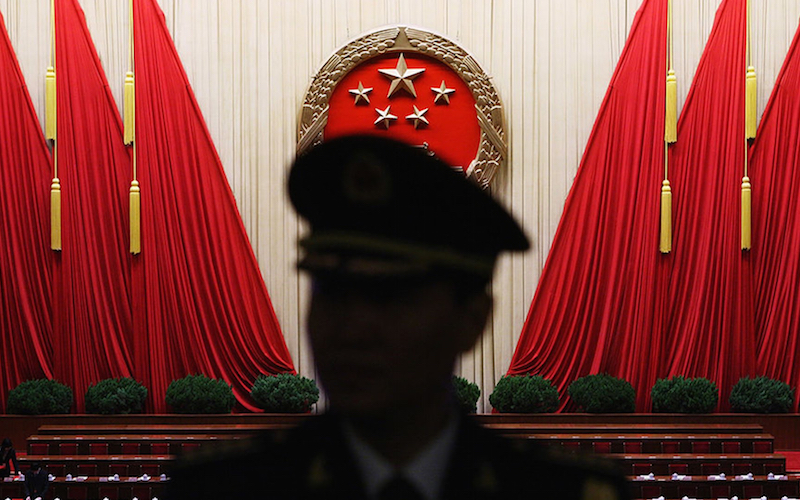
China’s Maritime Diplomacy Leaves ASEAN Divided on the South China Sea
On 12th July, an international tribunal backed the Philippines arbitration case against China’s extensive territorial claims in the South China Sea. The Permanent Court of Arbitration, based in The Hague, ruled that China’s infamous nine-dash line claim was illegitimate under the terms of the United Nations Convention on the Law of the Sea (UNCLOS), finding no conclusive evidence that China has historically exercised exclusive control over the waters. In light of the verdict, China has maintained its long-held position that the tribunal does not have the jurisdiction to address disputes which involve the issue of territorial sovereignty, and has reiterated its view that the South China Sea disputes should be resolved peacefully through dialogue and negotiations between the directly concerned parties.
Despite China’s decision to ignore the findings of the tribunal, and the fact that the decision is likely to change little on the ground, the Philippines cautiously welcomed the verdict. A Philippine Government statement said it was a “clear and unanimous judgement that upholds the rule of law and the rights claimed by the Philippines.” The United States – which has continually raised concerns over freedom of navigation in the region – called the decision an “important contribution to the shared goal, of a peaceful resolution to disputes in the South China Sea,” urging all parties to consider it as “final and legally binding.”
However, conspicuously absent amongst the international reaction to the long-awaited ruling was ASEAN, which as yet has failed to issue a joint response to the decision of the tribunal. This lack of a unified response follows several other failures to issue joint statements over the contentious South China Sea issue: there was confusion at the end of a meeting of ASEAN Foreign Ministers in June, when a communique criticizing China’s actions in the South China Sea was retracted amidst disagreement among members whilst after a summit in Phnom Penh in July 2012, ASEAN ended the meeting without issuing a joint communique for the first time in its 45-year history.
A divergence of views is understandable given the contentious and complex nature of the South China Sea issue and the diverse range of states which make up ASEAN. However, China’s maritime strategy has also been a contributing factor to the division within ASEAN, effectively splitting the regional body into two groups: the four claimant states which are more willing to criticize China’s policy in the South China Sea (Vietnam, the Philippines, Malaysia and Brunei), and the remaining 6 members (Cambodia, Indonesia, Laos, Myanmar, Singapore and Thailand) who do not wish to compromise their close economic links with China, and therefore take a more moderate position on the South China Sea issue.
China is officially committed to resolving the disputes through peaceful means and in 2013 discussions began with ASEAN on implementing a new Code of Conduct in the Sea to build on the non-binding Declaration of Conduct (DoC) which was signed between ASEAN and China in 2002. This process has helped to reassure claimant states and build confidence with ASEAN members; however progress has been remarkably slow. For China, discussions on a Code of Conduct appear to be a low priority, whilst internal divisions within ASEAN have also been a barrier to the process moving forward. Three years on from the initiation of talks, an agreed draft of the new code seems to be no closer, and could still be years away. The slow progress has worked to China’ strategic advantage: Beijing has been able to bide its time and continue to assert its sovereignty through building on disputed Islands in the South China Sea, in the absence of any restrictions which may be imposed in any future legally-binding framework. Effectively, the stalled discussions have granted Beijing more time to seal its advantages and expand its construction activities, which will surely put China in a more favorable position once the Code of Conduct discussions begin to gather pace.
Whilst allowing negotiations on the Code of Conduct to stall may constitute a passive move, China has also been far more active in promoting its own regional agenda in the maritime realm in an attempt to press forward its vision for the future of maritime co-operation in the region.
In 2013 President Xi Jinping launched the ambitious concept of a ‘21st Century Maritime Silk Road’ in a symbolic attempt to reinvigorate the historical trading route which linked China with the rest of the world in the 15th Century. Former Chinese Foreign Secretary, Yang Jiechi, said in a 2015 speech to advance the initiative, that “countries and people along the route have applauded it. We all agree to make the building of a community of common destiny for win-win co-operation the goal of our endeavor.” He also emphasized that the idea of the Silk Road would be based in the spirit of “peace, friendship, openness and inclusiveness,” providing mutual benefit to all countries along the route and especially those within the Asia-Pacific region.
China’s rhetoric of co-operation and mutual benefit has formed a key part of its neighborhood diplomacy in recent years and has courted attention from the non-claimant ASEAN countries which are increasingly keen to play a role in the new initiative and cultivate further economic links with China. This has created a distraction from the disputes in the South China Sea, and has focused global attention on China’s positive outlook for the region based on mutual co-operation and region-wide benefits. Jiechi reaffirmed this position, stating that the Maritime Silk Road “focuses mainly on economic and people-to-people cooperation; it will not, in principle, involve issues of controversy.”
At the 2015 Boao Forum for Asia, an annual economic dialogue, President Xi Jinping further expanded on the initiative collectively described as ‘Belt and Road’: comprised not only of the maritime domain, but also a land route labelled the ‘Silk Road Economic Belt.’ The proposals are arguably designed to consolidate China’s dominant position at the heart of regional trade, expanding its influence through geographically ambitious plans which encompass Asia, Africa, Europe and the connecting seas, bringing multiple economic benefits to participating countries. Whilst the initiative is seen by some as a large-scale infrastructure project, it also feeds into to a broader regional vision put forward by China’s leaders. This is a vision with China at its center, acting as the driving force of economic development and increasing prosperity throughout the wider Asia-Pacific. The vision includes free trade areas along with greater financial integration, with many of the ‘Belt and Road’ projects being funded through the new Asian Infrastructure Investment Bank (AIIB).
The initiative also is embedded within a broader political ideal: an adapted alternative to the traditional form of western-dominated capitalism and one which may prove appealing to post-colonial developing countries along the route. Essentially, China aims to use the project to advance a more distinctively Asian regional foreign policy, independent of western interference, based on one of its own key foreign policy tenets: the Five Principles of Peaceful Co-existence, which were initially codified in a 1953 treaty with India.
Many of China’s neighbors, especially the ASEAN non-claimant states such as Cambodia and Laos, have warmly welcomed closer economic ties with their powerful neighbor. However, other countries – such as Vietnam and the Philippines – appear to be more reluctant to embrace the vision of political and security co-operation with China over maritime issues, in light of the unresolved territorial disputes in the South China Sea. Political mistrust was further heightened in 2011, after China set up the ‘China-ASEAN Maritime Co-operation Fund,’ providing 3 billion Yuan for use in projects including fisheries, maritime technology, navigational safety and Search and Rescue. Participation in the fund has not been as frequent as China perhaps expected at the time of launch, as some states still retain reservations about China’s intentions, taking the view that using the fund may compromise their interests in the South China Sea.
Overall, China’s drive for increasing regional economic interactions in the maritime domain, has contributed to ASEAN’s recently visible division over the South China Sea issue. On one hand, six of ASEAN’s members wish to put the South China Sea disputes to one side and maintain a favorable relationship with China in order to benefit from its Maritime Silk Road initiative. On the other hand, the claimant states – particularly Vietnam and the Philippines – are more wary of China’s economic initiatives and rhetoric of co-operation, and fear being held ransom over the unresolved territorial disputes and conflicting claims in the South China Sea.
China recently followed-up its Maritime Silk Road initiative by launching the ‘Year of China-ASEAN Maritime Co-operation’ in 2015, hoping to advance a global perception of China as a responsible state committed to maintaining regional peace and security. The initiatives have succeeded in partially shifting attention away from the negative image of China associated with the South China Sea disputes, and have contributed to a growing divide within ASEAN over how to handle the matter – resulting in several recent failures to issue joint statements regarding the disputes.
China’s initiatives have enabled many regional countries to envisage the mutual benefits which could be gained from closer maritime co-operation with China on the economic front, through the AIIB, Maritime Silk Road and the Maritime Co-operation Fund.
While ASEAN remains divided on the contentious South China Sea issue, the creation and implementation of a binding Code of Conduct is likely to be further delayed. This will allow China to bide its time and continue its strategy of maritime assertiveness, while solidifying recent developments in the South China Sea before a future agreement is negotiated. At the same time, China has used the impasse to wrestle greater control of the regional narrative and cultivate an image of itself as an outward-looking state, positioned at the center of maritime trade in East Asia for decades to come.

